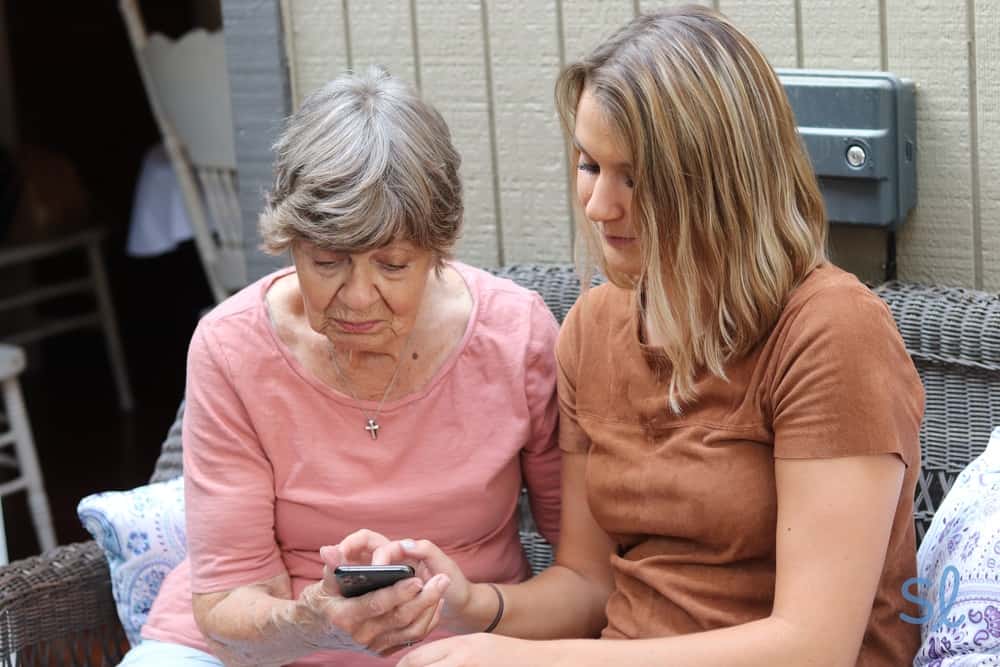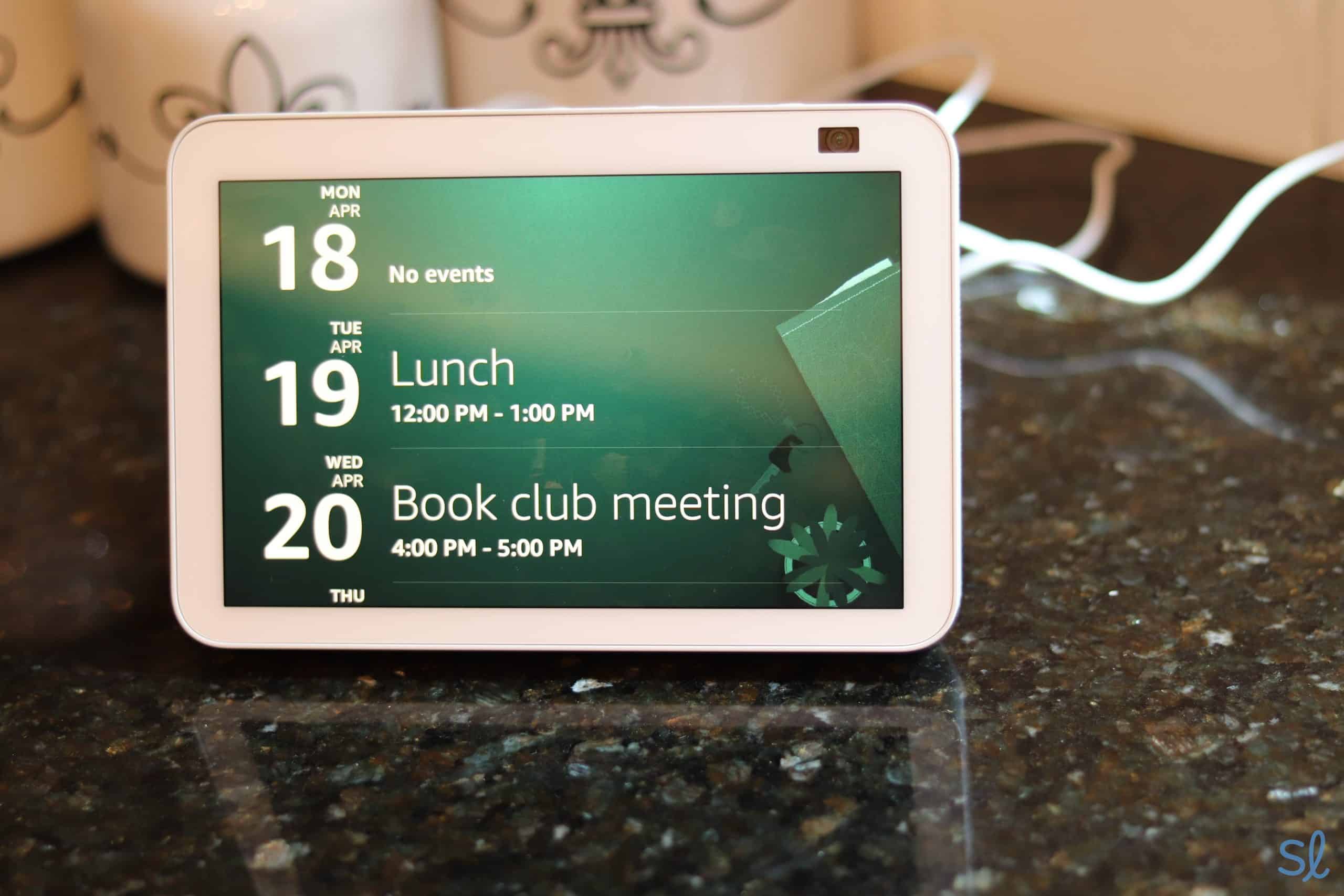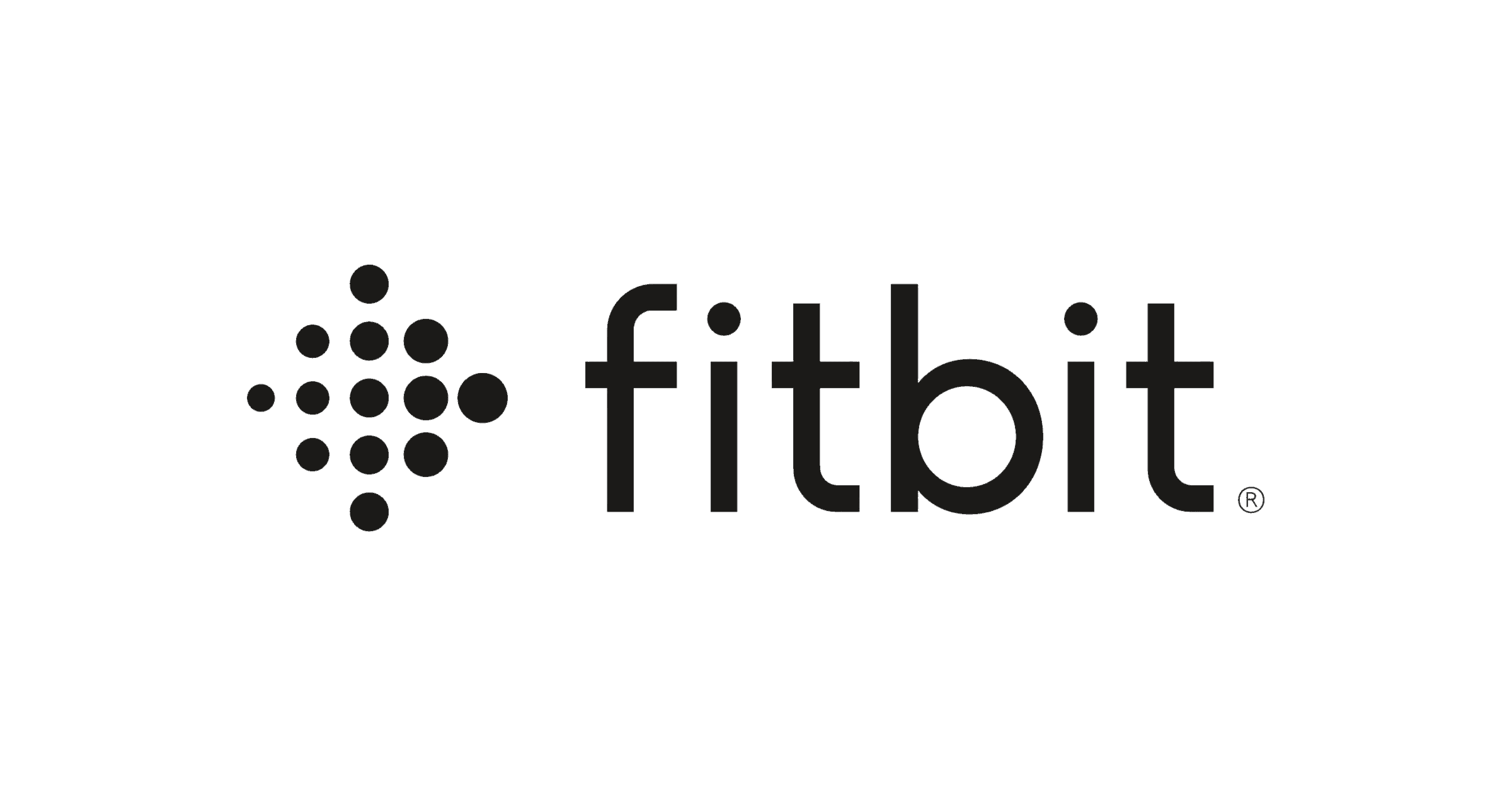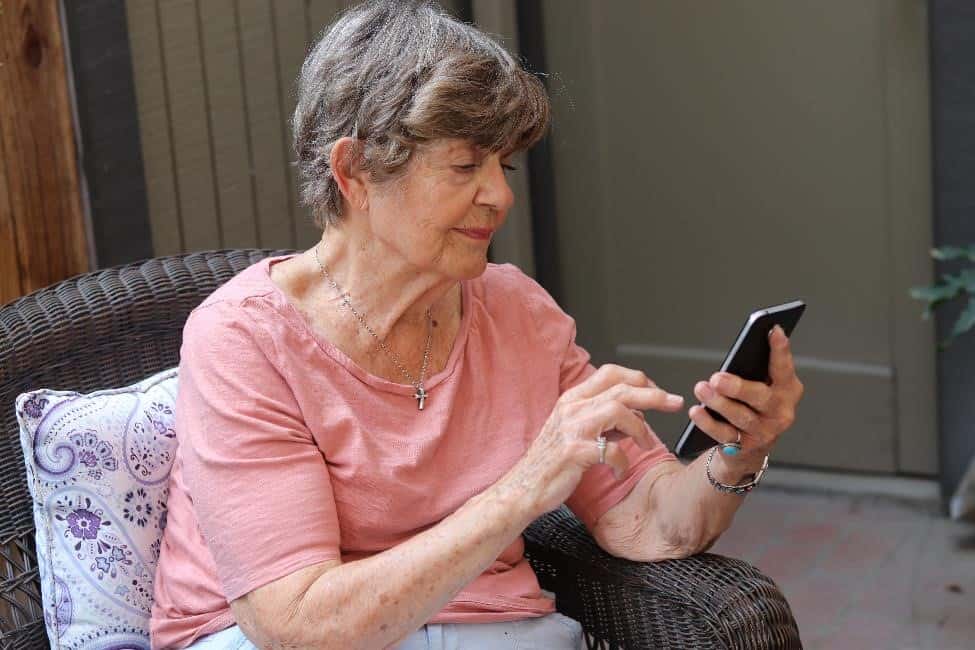Aging in place is an attractive option for many older adults. And thanks to advances in technology, it's a safe and realistic option for the majority of Americans enjoying their golden years. Assistive devices, mobile apps, and medical alert systems can work together to keep you safe and independent in your home, even as your health needs change.
Below, we'll touch on some gadgets, apps, and services that can help seniors safely remain in the familiarity of their home for longer and connect with friends and family, even from afar. Of course, most of these digital devices require a good internet connection for them to work properly. So, we'll give you the rundown on your internet options as well.

Table of Contents
- How Technology Can Help Older Adults
- Seniors Continue to Adopt New Technology
- Mobile Apps for Seniors
- Food Delivery Services for Older Adults
- Transportation Services for Seniors
- Video Chatting Apps and Services
- Virtual Retirement Communities
- What Are the Best Gadgets for Seniors?
- Getting Connected: Internet for Seniors
- More Tech-Related Topics
How Technology Can Help Older Adults
Technology offers a wide range of benefits to older adults. Below are just a few of our top reasons why embracing new tech can benefit seniors as they age in place!
- Provides access to transportation and food
- Monitors health and wellness
- Keeps seniors safe
- Informs you about the latest news and trends
- Provides entertainment
- Alerts caregivers if something is irregular
- Provides peace of mind
- Connects them with friends, family, and healthcare providers
Seniors Continue to Adopt New Technology
If new technology intimidates you, you’re not alone! But seniors have proven time and time again that they can adjust to the ever-evolving tech landscape as well as any other age group. As of 2024, 76 percent of adults age 65 and older now own a smartphone, a significant increase from just 61 percent in 2021.1 Once seniors are connected to the internet, getting online becomes part of their daily routine. Roughly three-quarters of older adults with an internet connection report that they use it daily.
The coronavirus pandemic accelerated how quickly seniors learned the ins and outs of new technologies to stay connected with loved ones by using FaceTime, hosting meetings on Zoom, and hopping on telemedicine calls with physicians. We are confident that with a little guidance and practice, you can get the hang of any technology you want to learn. And we are here as a resource for you every step of the way! Let’s take a look at some of our favorite tech services for seniors.
Mobile Apps for Seniors
Mobile applications, or mobile apps, are basically computer programs designed to run specifically on your smartphone or tablet. Smartphones and tablets come preloaded with some mobile apps, just like if you were to purchase a new computer, there would be programs preloaded on it and some you would need to download. Likewise, there are mobile apps you can download for free or purchase through the Apple App Store for Apple devices or Google Play for Android devices.
These days, there's a mobile app for everything! Your favorite stores probably have a mobile app so you can easily shop via your mobile device. There are apps to keep you connected to friends and family, such as FaceTime and Facebook Messenger. And there's no chance you'll be left twiddling your thumbs with all the game, video, music, and audiobook apps just a tap away. To get you started, here are the best apps for seniors to keep you safe, connected, and entertained!
Food Delivery Services for Older Adults
As we age, maintaining proper nutrition is key to preventing disease and supplying our body with the nutrients it needs to function.2 Whether you’re a pro in the kitchen or would rather have someone else do the cooking, food delivery services make it easy for seniors to have groceries and meals brought right to their doorstep. Some of the most popular food delivery apps for older adults include:
- Instacart
- HelloFresh
- Blue Apron
- Home Chef
- Uber Eats
- DoorDash
- Grubhub
- Silver Cuisine
How Much Do Food Delivery Services Cost?
Popular delivery meal kits like HelloFresh and Blue Apron cost approximately $9 to $12 per serving as of 2025. Grubhub and DoorDash, which deliver food from your favorite restaurant, typically charge delivery fees ranging from $2 to $6 depending on distance and demand.
Keep in mind you will also pay the cost of the food you order from the restaurant. Instacart allows you to purchase your groceries and have them delivered within hours. The delivery fee for orders over $35 starts at $3.99, though Instacart+ membership ($99 per year) offers unlimited free delivery on orders over $35.
Keep in Mind: For online delivery services like Instacart and DoorDash, it is custom to tip the deliverer for their service. So, when calculating costs, make sure to include room for a tip!
Transportation Services for Seniors
Seniors who are unable to drive, or just prefer not to, can benefit from transportation and ridesharing apps. Two of the most popular ridesharing apps are Uber and Lyft. With these mobile apps, all you have to do is enter your destination and choose a ride. The app alerts you when the driver is arriving. Then, you can just hop in and enjoy the ride! If you don't have a smartphone or prefer not to download a mobile app, services like GoGo Grandparent can call a ride for you. All you have to do is give the company a call and tell them where you'd like to go. These transportation services are ideal for seniors who want to remain independent and on the go but may lack the ability to drive.
Video Chatting Apps and Services
These days, one of the easiest ways to check in on our friends and family is to hop on a video call. Free services like Zoom, Skype, and FaceTime let you call your loved ones whenever you like and see their smiling faces, even if you live far away from one another. Whether you're checking in on the grandbabies, having a wine night with your friends, or hosting a book club, video chatting helps you stay connected.

FaceTime – Our Editor FaceTiming with her grandma
Pro Tip: Want to learn how to use a video chatting service to connect with your loved ones? Check out our “More Tech-Related Topics” section. You'll find step-by-step guides on how to use Zoom, FaceTime, and Skype!
Virtual Retirement Communities
Did you know that you can even use the internet to join a retirement community? For seniors who are still active and require a low level of care, virtual retirement communities are a viable option. This type of senior living allows individuals to live in their own home. The virtual community is staffed by a team who organizes a multitude of services and programs for members. These may include transportation, assistance with medical appointments, grocery shopping, organized group outings, and aid with applying for benefits. This type of senior care is similar to independent living facilities, with the exception that seniors can remain in their home.
Another major benefit of a virtual retirement community is that it gives seniors a way to connect with others their age. So how much does this type of senior living cost? It is actually one of the most affordable options out there, with the understanding that seniors will have to pay for their own housing.
Virtual retirement communities typically cost between $500 and $700 per year for individuals or $700 to $900 for couples as of 2025. If you have already paid for your house and have minimal utilities and living expenses, this can be the cheapest form of senior care available.
What Are the Best Gadgets for Seniors?
Cell Phones and Smartphones
Phones have come a long way since their debut in the 19th century! Our cell phones are with us all the time and many of us can hardly remember life without them. As of 2024, 95 percent of adults age 65 and older own a cell phone, with 76 percent owning a smartphone.3
Whether you keep it simple with a flip phone or sport the latest and greatest, seniors can benefit from cell phones by chatting with friends and family, utilizing social networks, and keeping up with the latest news. Don't forget the ability to snap cute photos of pets and grandbabies!
FYI: Looking for a new phone? Check out our list of the best cell phones for seniors to find the right device for you!
Tablets and E-Readers
Tablets are great for entertainment gurus! Seniors may prefer a tablet's larger screen for reading, watching videos, playing brain games, and browsing social networks. Some tablets are specifically designed with seniors in mind, like the GrandPad from Consumer Cellular if you are OK with only having essential features.
If you're a bookworm, an e-reader could become your new best friend! With the ability to store hundreds of your favorite books on a tablet, you've got your own mobile library. The large, bold text and backlit screen is easy on your eyes. Plus, tablets are smaller and lighter than most books, so they're easier to grip, and your wrists won't ache after a while. Some e-readers are even waterproof – yes, you can read your books on the beach or in the tub. Perfect!
Fitness Trackers
Fitness trackers are wearable devices, great for active seniors who desire health insights and accountability with their commitment to keep moving. Popular trackers such as Fitbits are sleek and double as a wristwatch. Fitbits connect to your smartphone, and most are waterproof. These little devices track your heart rate, steps, calories burned, monitor your sleep, and more. If you enjoy some friendly competition, you can share your progress and compete with friends on the Fitbit app. Game on!

Our editor-in-chief, Jeff Hoyt, testing out his Fitbit Sense smartwatch
Medical Alert Systems
Seniors who desire to age in place should look into medical alert systems, especially if they live alone. Ranging from basic to high-tech, medical alert systems can keep you safe both in your home and on the go. By wearing a pendant around the neck or wrist, you can discreetly have help at your fingertips 24/7. Pushing the help button connects seniors to a call center, where they can speak to a trained operator any time of day.

Our editor’s grandma wearing her medical alert smartwatch from Medical Guardian
Some medical alert systems have more robust features like fall detection, companion apps, activity monitoring, and caregiver integrations. Most equipment can be bought for a one-time fee, plus an additional monthly service fee. Our experts have tested the top medical alert systems to guide you in selecting a system that fits your lifestyle and budget.
Did You Know: In the U.S., more than one in four adults age 65 and older experience a fall each year.4 Wearing a medical alert device allows you to summon help if needed in the event of a fall.
Smart Home Devices
Smart home devices provide automation, safety, and convenience for seniors in their home. Purchased individually or as a bundle, these technologies are best used in conjunction with your smartphone to get the most out of their features. Below are a few of our favorite smart home devices for seniors.
| Smart speakers | Smart sensors | Video doorbells | |
|---|---|---|---|
| Popular brands | Amazon Alexa, Google Assistant, Siri | Nest, Aloe Care Health, Abode, FIBARO | Arlo, Nest, Ring |
| What they do | Smart speakers can tell you the weather, set audio reminders, make calls, send texts for you, play music, play games, and more! | Smart sensors become familiar with your daily activity and monitor your home, sending alerts if anything is unusual. | View who is at your door via your smartphone or tablet. You can also see any activity outside your door such as a package drop-off. A two-way speaker allows you to chat with your visitor and remotely unlock the door for them to enter if you’re unable to come to the door. |
| Why they’re great for seniors | Seniors can activate this technology with their voice, rather than having to swipe or tap. For seniors who are less tech-savvy or have dexterity challenges, a smart speaker is a convenient digital companion. | Most smart sensors can be set up so they alert seniors and their loved ones if irregular activity is detected in the home, providing peace of mind for those who live alone. | Providing an extra layer of security and convenience, video doorbells are ideal for seniors who live alone or have limited mobility, since it gives them the ability to communicate and unlock the door for visitors via their smartphone. |
| Cost | $50-$350 | $40-$250 | $100-$300 |
Getting Connected: Internet for Seniors
What Can Seniors Do on the Internet?
There are a plethora of reasons seniors embrace the internet. It may be to connect with loved ones or stay informed on current news and research. Searching for yummy recipes, watching videos, making telemedicine calls, paying bills, and social networking are all common reasons seniors choose to hop on the World Wide Web. Plus, the majority of the technologies we touched on above rely on the internet to work. So, you'll need a great internet provider to stay active online.
Internet Providers for Seniors
Several factors go into choosing an internet provider and plan. Companies that service your area, how much you will use the internet, and your budget are all elements to consider as you weigh out your options.
Typically, the monthly service fee for internet ranges from $50 to $120 per month as of 2025. Low-income seniors may qualify for a discounted rate. Plus, most providers give new customers a lower monthly rate for their first year of service.
If you're looking for a great deal and decent speed, AT&T may be a good option. But they don't service every state, so make sure you're eligible for service. CenturyLink is another affordable option that is available in most states. For qualifying seniors, CenturyLink offers a free internet training program so you can get the hang of things if you're new using the internet.
Advice From the Experts: We've done a full rundown on the top internet providers for seniors. Keep in mind that providers run seasonal specials, so offerings and prices may vary throughout the year.
If you already have an internet provider but your connection feels about as slow as a snail, don't worry! There are several ways to improve your internet connection all by yourself; no tech team needed. View our guide on how to speed up your internet for more details.
More Tech-Related Topics
Interested in learning more about tech for older adults? Take a look at the resources below!
Citations
- AARP. (2020). Older Adults Keep Pace on Tech Usage.
- Pew Research Center. (2017). 2. Barriers to adoption and attitudes towards technology.
- MedlinePlus. (2021). Nutrition for Older Adults.
- Pew Research Center. (2021). Mobile Fact Sheet.
-
Pew Research Center. (2024). What we know about Americans who don't use the internet.
-
National Council on Aging. (2024). Food & nutrition resources for older adults.
-
Centers for Disease Control and Prevention. (2024). Falls data and statistics.
-
Centers for Disease Control and Prevention. (2024). Older Adult Falls Data.






